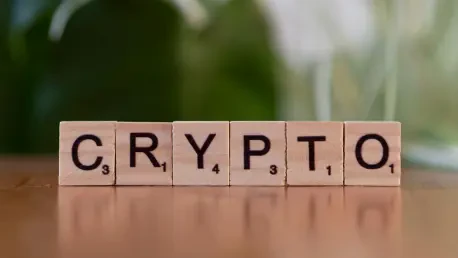Introduction to Europe’s Regulatory Gap in Digital Assets
Imagine a rapidly evolving digital landscape where tokenization transforms private company shares and unique revenue-sharing contracts into digital representations, yet a significant portion of these innovations falls into a regulatory void. In Europe, current frameworks like the Markets in Crypto-Assets (MiCA) regulation and the Markets in Financial Instruments Directive (MiFID II) are built on the assumption that assets are inherently transferable, leaving non-transferable digital assets unaddressed. This oversight creates uncertainty for developers and investors alike, as tokenized assets that cannot be traded or transferred lack clear legal classification.
The exclusion of non-transferable tokens from these regulations poses risks of compliance issues and missed opportunities for innovation in a field poised for exponential growth. Addressing this gap is essential to provide legal certainty, protect stakeholders, and ensure Europe remains competitive in the global digital asset market. This guide explores the challenges stemming from transferability assumptions, the transformative potential of tokenization, insights from structured regulatory experiments, and actionable recommendations for bridging this blind spot.
Why Addressing Non-Transferable Tokens Matters
The rapid pace of technological advancement in digital assets demands that regulations evolve to encompass all forms of tokenized assets, including those that are non-transferable. Without clear rules, developers face ambiguity about whether their innovations comply with existing frameworks, potentially stifling creativity or driving projects to less regulated jurisdictions. This uncertainty undermines Europe’s ambition to lead in blockchain and digital finance.
Regulatory clarity around non-transferable tokens offers multiple benefits, starting with enhanced legal certainty for issuers and developers crafting digital representations of unique assets. It also minimizes the risk of unintended reclassification, where a tokenized asset might be reclassified as a security or crypto-asset due to misinterpretation. Furthermore, clear guidelines boost investor confidence by ensuring transparency about the nature of the assets they engage with, while positioning Europe as a hub for responsible digital asset innovation.
The stakes are high, as tokenization continues to reshape how private and contractual assets are managed digitally. Ignoring non-transferable tokens risks creating a fragmented market where only transferable assets receive regulatory attention, leaving a significant segment of the industry vulnerable to legal challenges. Proactive adaptation of rules ensures a balanced ecosystem that supports both cutting-edge technology and investor protection.
Key Strategies to Bridge the Regulatory Blind Spot
To address the oversight of non-transferable tokens in Europe’s digital asset frameworks, actionable strategies must be implemented that align with current technological realities and legal structures. These approaches focus on integrating innovative concepts and leveraging existing regulatory experiments to create a cohesive system. The following sections detail specific methods to achieve this goal, grounded in practical insights and real-world applications.
The emphasis lies in adapting frameworks without necessitating entirely new legislation, ensuring that regulators and industry players collaborate effectively. By focusing on technical and legal safeguards, Europe can foster an environment where tokenization thrives without compromising compliance. These strategies aim to provide a roadmap for stakeholders navigating this complex landscape.
Recognizing Digital Twins in Regulatory Frameworks
A pivotal concept in addressing non-transferable tokens is the idea of a “digital twin,” which refers to a digital representation that mirrors the legal characteristics of an underlying asset without altering its inherent status. For non-transferable assets, this means the tokenized version should retain the same restrictions on transferability as the original, ensuring it does not inadvertently fall under stricter regulations like MiCA. Regulators can adopt this principle to clearly delineate when a tokenized asset remains outside existing financial oversight.
Implementing the digital twin approach requires a nuanced understanding of how tokenization interacts with legal definitions. If no additional features, such as transferability, are engineered into the token, its classification should align with the underlying asset’s status. This method prevents unnecessary regulatory burdens on assets that are not intended for trading, thereby supporting innovation in niche areas of digital finance.
Collaboration between regulators and technologists is crucial to codify this concept into practical guidance. By establishing clear criteria for what constitutes a digital twin, authorities can provide a framework that distinguishes between mere digitization and the creation of new financial instruments. This clarity helps developers design compliant solutions while maintaining the integrity of non-transferable assets.
Case Study: Tokenizing Private Company Shares
Consider the tokenization of private company shares, which are often legally restricted from being freely traded or transferred. By applying the digital twin concept, a tokenized version of such shares can be created to reflect ownership or rights digitally without introducing transferability features. This ensures the token aligns with the original asset’s legal status, avoiding reclassification under frameworks like MiFID II.
This example demonstrates how maintaining non-transferability through technical design can prevent regulatory overreach. For instance, smart contracts can be programmed to restrict token movement, ensuring that only authorized actions, such as record-keeping, are possible. Such mechanisms preserve the asset’s nature while enabling digital efficiencies in management and transparency.
The significance of this case lies in its potential to unlock tokenization for private markets without triggering unintended compliance obligations. It illustrates a path forward for regulators to recognize digital twins as distinct from transferable crypto-assets, providing a model for other non-transferable instruments and fostering trust among stakeholders in the tokenization process.
Leveraging Insights from the EU Blockchain Sandbox
The EU Blockchain Sandbox offers a structured environment for testing and refining the classification of tokenized assets, providing valuable lessons for addressing non-transferable tokens. Its sequential analysis approach evaluates tokens first under MiFID II, then MiCA, followed by the Alternative Investment Fund Managers Directive (AIFMD), and finally national laws. This methodical process ensures a comprehensive assessment of an asset’s legal standing.
A key takeaway from the sandbox is its strict definition of non-transferability, which goes beyond contractual agreements to require robust technical mechanisms. For instance, processes like redemption and reissuance are mandated to prevent unauthorized transfers, ensuring that a token’s non-transferable status is not merely theoretical but practically enforced. This rigorous standard helps maintain regulatory consistency.
The sandbox’s emphasis on dialogue between regulators and industry participants also serves as a model for resolving ambiguities. By fostering collaboration, it creates a feedback loop that informs best practices and shapes future guidance. This iterative process is essential for adapting to the nuances of digital assets, particularly those that defy traditional categorizations due to their non-transferable nature.
Example: Sandbox Guidance on Technical Safeguards
A practical illustration from the sandbox’s Best Practices Report highlights how technical safeguards were applied to a tokenized asset to preserve its non-transferable status. In this scenario, developers implemented a system where tokens could only be redeemed by the issuer through a controlled reissuance process, preventing any unauthorized transfer between parties. This design ensured compliance with the sandbox’s criteria.
This example underscores the importance of embedding restrictions at the technological level rather than relying solely on legal contracts. Such safeguards provide assurance to regulators that the asset’s characteristics remain unchanged post-tokenization, thereby avoiding classification as a regulated financial instrument. It sets a precedent for how technical innovation can align with regulatory intent.
The broader implication of this guidance is its applicability to various non-transferable assets seeking digital representation. By adopting similar mechanisms, issuers can confidently navigate the regulatory landscape, knowing that their tokens are unlikely to trigger stricter oversight. This fosters a more predictable environment for tokenization projects across Europe.
Conclusion: A Call for Clarity and Innovation in Europe’s Digital Asset Space
Looking back, the discussion highlighted a critical oversight in Europe’s digital asset regulations concerning non-transferable tokens, revealing how existing frameworks struggle to accommodate the full spectrum of tokenized innovations. The exploration of concepts like digital twins and the structured insights from the EU Blockchain Sandbox underscored a path toward resolution without the need for sweeping legislative changes.
Moving forward, stakeholders—ranging from developers to regulators—should prioritize the adoption of clear, practical guidance that codifies these principles into actionable standards. Issuers and technologists are encouraged to integrate technical safeguards that preserve non-transferability, while authorities can leverage sandbox findings to issue concise directives that enhance legal certainty.
Ultimately, the focus should shift to fostering an ecosystem where innovation in private asset tokenization flourishes alongside robust investor protection. By embracing these strategies, Europe can solidify its position as a leader in digital finance, ensuring that both current and emerging players in the market benefit from a balanced and forward-thinking regulatory approach.









